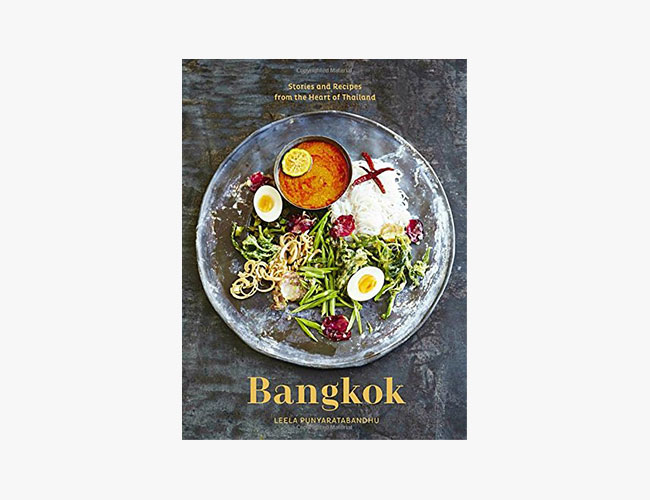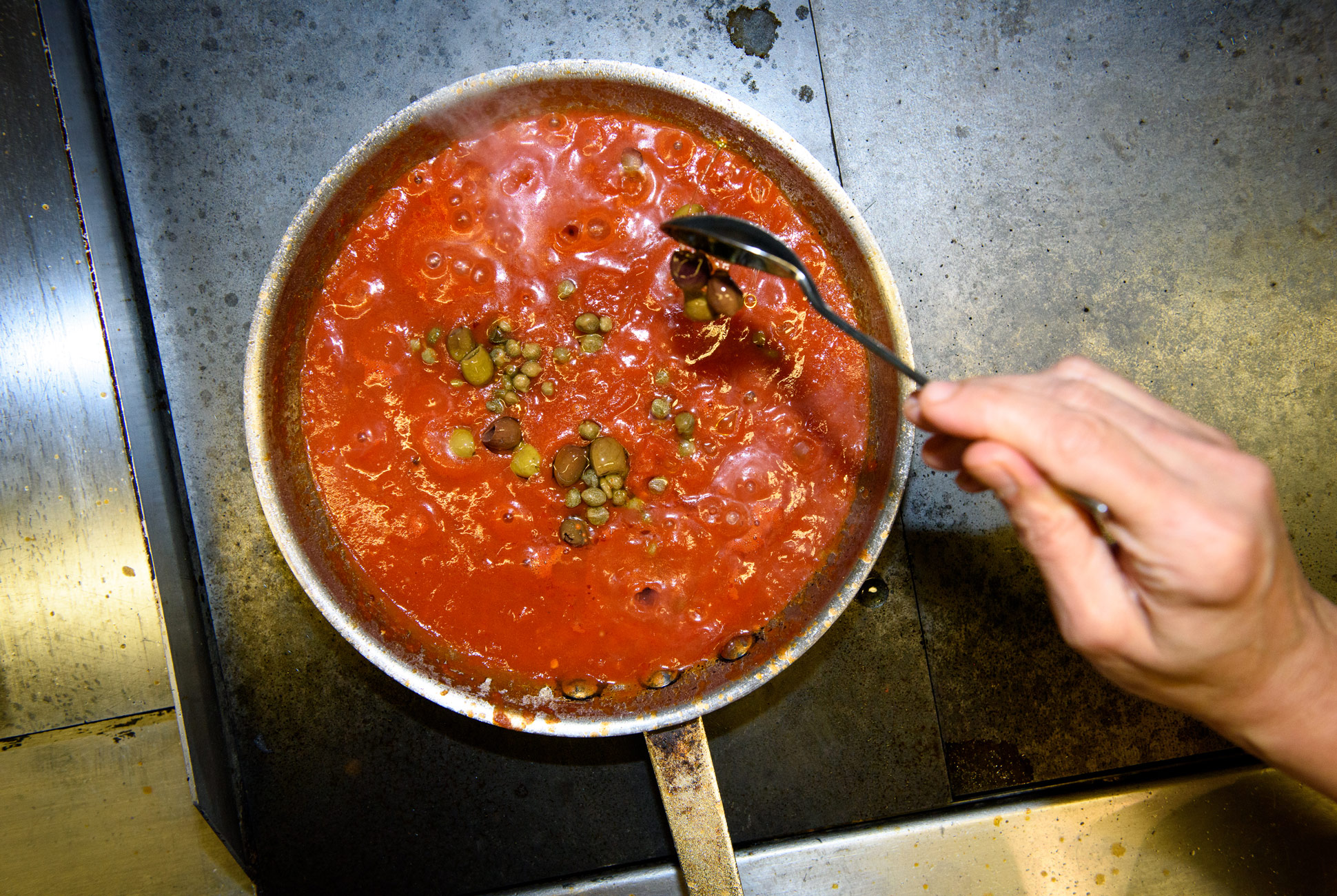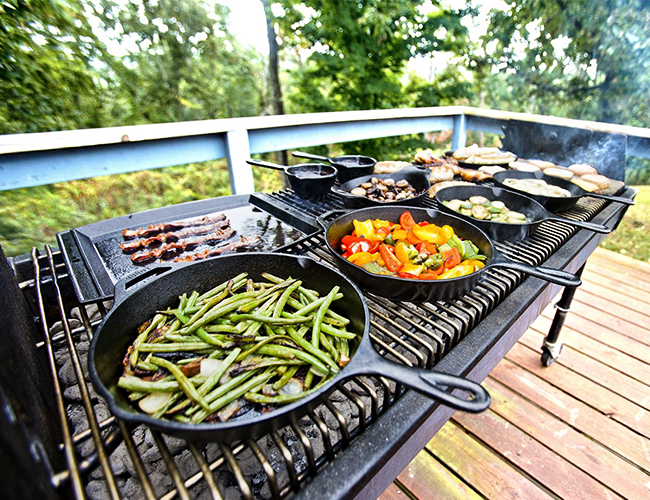Last Updated November, 2017.
On the surface, a charcuterie plate seems like a simple hors d’oeuvre. After all, there’s no cooking involved — just take some deli meat and throw it on a cutting board and call it a day, right? Wrong. For a charcuterie plate to stand out and have a well-rounded selection, some serious thought and preparation is required.
In the vast world of charcuterie, it’s good to have a guide. For that reason I spent some time with Greg Blais — a salumi (meat) and formaggi (cheese) expert at Eataly NYC. Blais gave me a lesson in putting together a masterfully crafted plate of meat, and the time I spent with him revealed it isn’t as hard — or as easy, for that matter — as it may seem. Knowing a few basic rules will help any novice curate a meat board that is balanced, unique and bound to impress.
Meats

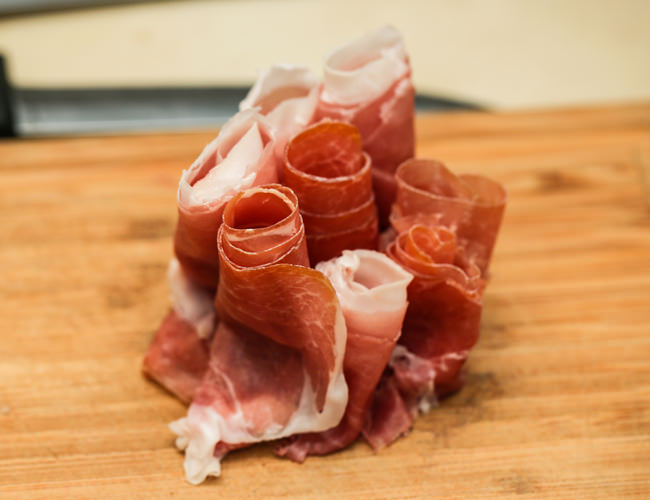
Build Around Prosciutto
When starting a board it’s essential to consider how many people you’ll be serving. Greg says this breaks down the overwhelming nature of choosing from a large selection of meats, and it will help focus attention on how many meats to pick out and how much to buy. “No one is going to eat a pound of everything…we don’t push too much on anybody because it’s not about overfeeding everybody, it’s about them enjoying it,” he says. Let your butcher know how many people you’ll be serving and they’ll cut the right amount of meat for you — two or three ounces of meat per person should cut it.
When choosing the meats themselves, Greg recommends one solid starting point: prosciutto. Use it as the pillar of your plate and move on from there. Greg recommends having a balance between crudo (cured raw) and cotto (cooked meats). Cured meats — like prosciutto crudo, capicola and sopressata — are raw and cured with salt. Using too many crudo meets can be overwhelmingly salty, so adding cotto meats — like mortadella and cooked hams — helps maintain balance.
Greg also believes diversity is important, both in mouthfeel and flavor. To keep mouthfeel diverse, have meats that work well at different thicknesses. Greg cut up our prosciutto and speck thin, but rather than having thin strips of mortadella, he cut them up into thick chunks. Mortadella, Greg notes, is another staple of charcuterie platters. For diversifying the flavor profile, pick some meats with some kick to them. “Put spicy capicola, spicy sopressata or calabresse with red pepper in there and that’s good for heat,” says Greg, but don’t overdo it. “You don’t want to do too much of anything or too little of anything.”
Six Meats to Try
Prosciutto di Parma: Made in Parma, Italy, this type of prosciutto is considered some of the best money can buy. It is made from specially-raised pigs, salt and that’s it.
Salame Felino: Often considered “The King of Salami,” Salame Filino is named after the small town of Felino where it originated centuries ago. It has a smooth, sweet taste and is flavored with white wine and peppercorns.
Wild Boar Sopressata: Another type of Italian salami, this sopressata made from wild boar has a rich, deep red color and is robust in flavor.
Mortadella: Similar to bologna — but far better — mortadella is cooked rather than cured, and is seasoned with black pepper and occasionally pistachio.
Porchetta: Made by gutting, deboning and roasting an entire pig, porchetta has a fatty and savory taste, and is heavily salted and seasoned with herbs like garlic, rosemary and fennel.
Alto Adige Speck: Speck from Alto Adige — an autonomous region in Northern Italy — is a cured and smoked meat with incredibly bold flavor that stands out on any charcuterie board.
Accouterments

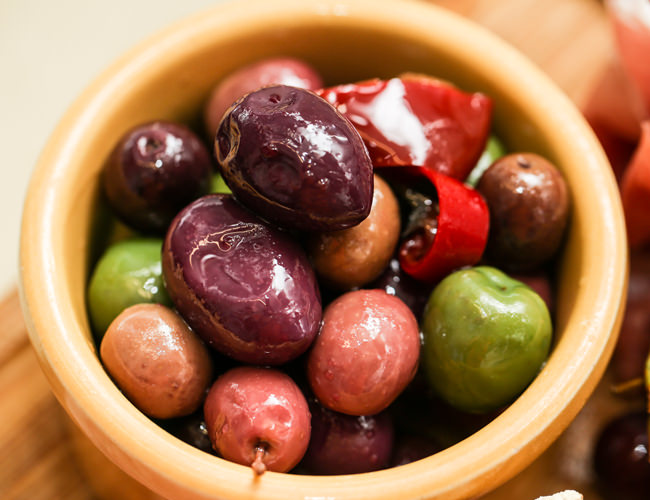
Balance Your Flavors
Adding accouterments is essential to making a great charcuterie plate because they act as both palate cleansers and pairings, and will also add a variety of texture to the plate. Picking good accouterments is actually very simple. “Cured meats are very salty … you want to counteract that with things that aren’t,” Greg tells me. “You want sweet things, or tart things or crunchy things — anything that’s the opposite of [salty], just to balance it out.”
A classic palate cleanser is pickled vegetables, which you can either make yourself or buy in jars. The acidic qualities will neutralize any strong flavors left on the palate. Grapes and olives pair well with salty cured meats, cleansing the palate and giving some appealing color to the board as well. Jams are also a must-have, as they are a simple way to add some sweetness into the mix. Greg used tomato and pear jam on our plate, but also highly recommends mustard fruits — cooked-down fruit with spices and mustard seed.
Traditionally, a genuine charcuterie plate is just meat, but it’s okay to add one or two cheeses. Just like your other accouterments, it’s important to choose a cheese that will counteract the saltiness of the meat. For my board Greg gave me a small wedge of Calcagno, a hard sheep’s milk cheese from Sardinia. “It’s a beaut … it’s nice and sweet, it’ll mix well with salt.” Greg also says bread is an essential vehicle for the meat, but like everything else on a charcuterie plate utilizes restraint. “People always overdo the bread on these platters … then start throwing it down and the food shows up and [they] don’t even want it.”
Five Cheeses to Try
Calcagno: A sheep’s milk cheese from Sardinia, calcagno is firm and sweet, making it a great counterbalance to salty cured meats.
Asiago Pressato: Made from whole cow’s milk, this cheese has a mild flavor that makes it a perfect match for subtly sweet cooked meats like mortadella and prosciutto cotto.
Paglierino: This sheep’s milk cheese is tangy but rich in flavor, and it goes well with porchetta or cooked and herbed salumi as it contrasts in flavor and texture perfectly.
Taleggio: A semi-soft cow’s milk cheese with a mild, slightly tangy flavor that is perfect for pairing with the smokey flavors of Alto Adige speck.
Parmigiano Reggiano: By Italian law, this cow’s milk cheese can only be made in the providences of Parma, Reggio Emilia, Bologna, Modena and Mantova, otherwise it’s just generic parmesan. It’s sharp and savory and will go with just about anything.
Presentation

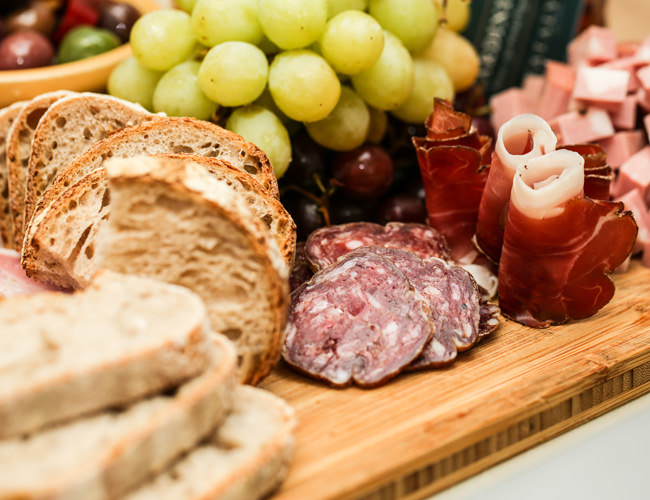
Eat With Your Eyes
If the countless iPhone photos and hungry looks that Greg’s finished platter got from the patrons at Eataly are any indicator, the arrangement is as important as the items on the plate. “You always eat with your eyes,” says Greg. The layout is a great place for beginners to get creative, and to really make a board their own. However, there are some things to keep in mind.
In Italy, slices of meat are ideally laid out flat, but if you’re serving a larger amount of people you need to make space where you can. “You might not get a lot of room for anything else if you lay out these monstrous strips so … roll them up,” Greg advises. The rolls should be done up loosely, so they can be unfurled before eating. If they’re done too tight they get packed together and will feel “gummy” and “gross” (as Greg puts it). By doing this, you not only clear space for more meat and accoutrements, you have an eye-catching display of meat.
The rolls will add some height to the platter as well, something Greg likes to do. “When you lay things out … kind of make things three dimensional.” He did this by piling up accoutrements (like grapes), as well as adding in some Mario Fongo breadsticks that he stood up vertically. It was a small, simple and inexpensive touch that made the platter look unique.
About Our Expert


Greg Blais is the Salumi and Formaggi Manager at Eataly NYC and is an instructor at Eataly’s school, La Scuola di Eataly, where he educates interested individuals on artisan cheese pairings and history. Greg is also a host on the Heritage Radio Network’s weekly Cutting the Curd podcast, and served as an American Cheese Society judge and was the only American judge in the first Concorso Nazionale dei Formaggi a Latte Crudo.
This is a test of integrating author bio data.
More by Andrew Connor | Follow on Contact via Email



